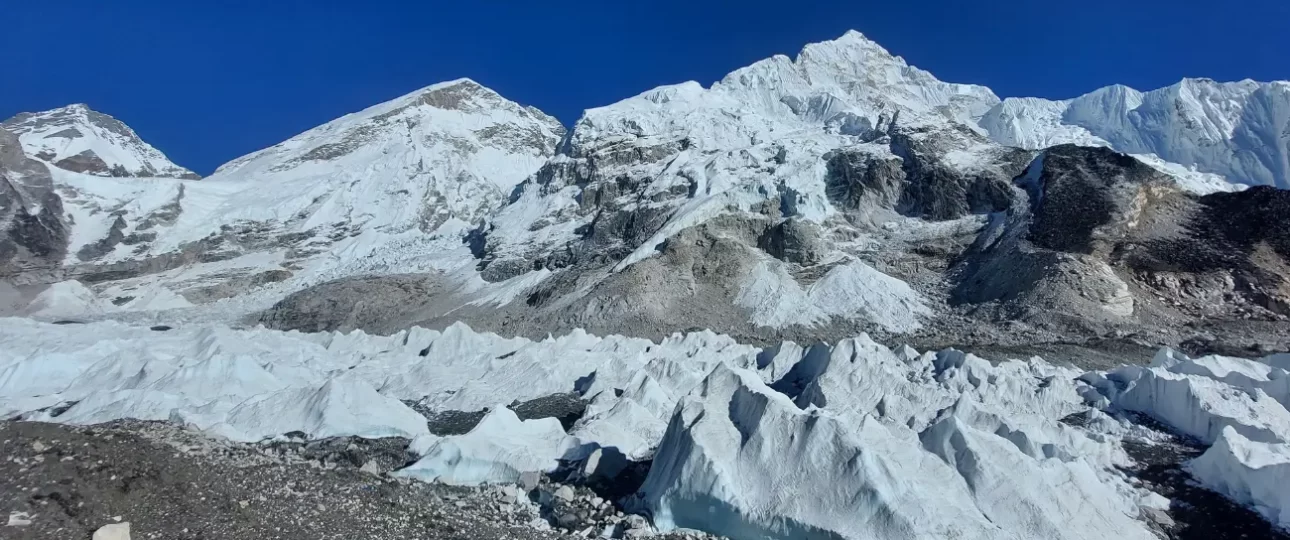Highest Trekking Adventure: Trekking to Mount Everest Advance Base Camp
Are you ready for the adventure of a lifetime? Brace yourself for the journey to the Mount Everest Advance Base Camp (EABC), a trekking experience unlike any other. Distinguished from the more commonly known Everest Base Camp, the Mount Everest Advance Base Camp is accessed from Tibet. This trek takes you on an established trail, providing the unique opportunity to ascend Everest without requiring a climbing permit. The route mirrors the path taken by climbers en route to summiting Everest, passing through the North Col and then the Northeast Ridge.
In this comprehensive guide, we’ll explore every facet of this extraordinary expedition, from the cultural wonders of Lhasa to the mysteries of Everest’s past and the unique challenges of the North Col route.
Altitude Acclimatization in Lhasa
Before embarking on the advanced Everest base camp trek, spend a few days acclimatizing in the enchanting city of Lhasa. Nestled at an elevation of 11,975 feet (3,650 meters), Lhasa offers not only a cultural feast with attractions like the Potala Palace, Sera Monastery, Ganden Monastery, Drepung Monastery, Barkor Square, and Jokhang Temple but also serves as a crucial starting point for adjusting to the high altitude.
Allow yourself to be captivated by the Potala Palace, an architectural masterpiece that served as the winter residence of the Dalai Lama. Explore the three great monasteries of Sera, Ganden, and Drepung, each offering a unique insight into Tibetan Buddhism. Wander through the bustling Barkor Square, a vibrant market surrounding the Jokhang Temple, considered one of the holiest sites in Tibet. These initial days in Lhasa not only prepare you for the challenges ahead but also introduce you to the rich cultural tapestry that is integral to the Tibetan experience.
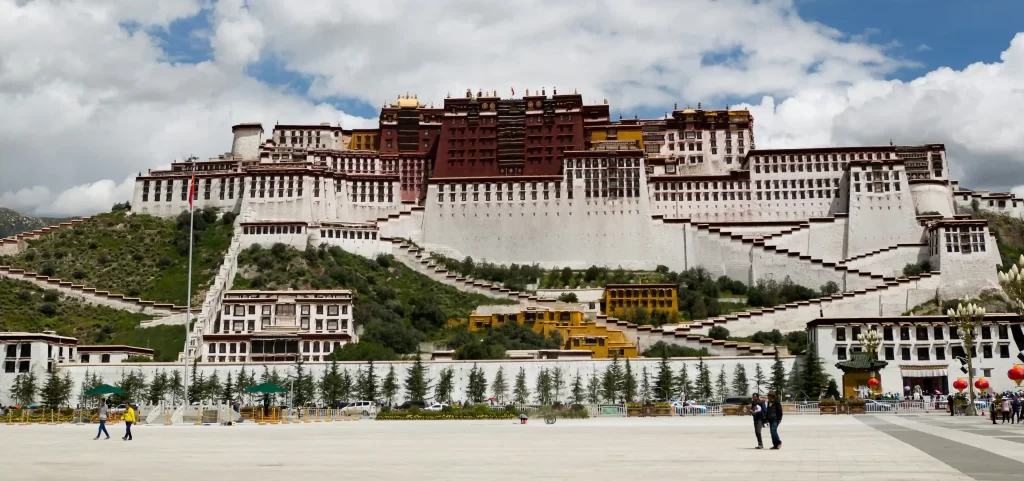
Scenic Highlights Along the Overland Route
As you set out from Lhasa towards Everest, the overland route unfolds, offering a visual banquet of natural and cultural wonders. Take in the breathtaking Yamdrock Lake, a turquoise gem set amidst the Himalayas. The journey takes you over the high passes of Kamba La and Karo La (both just under 5000m / 15500 ft), providing panoramic views of the surrounding peaks, including the majestic Nojin Kangtsang standing tall at over 7000 meters.
Your route leads you to Gyantse, a small village renowned for its massive hilltop fortress, where you can immerse yourself in the local Tibetan culture. Continuing onward, you reach Shigatse, home to the Tashilhunpo Monastery, a key seat of the Panchen Lama. The road then meanders to Babar, where your guide procures entrance tickets to the Everest Nature Reserve.
The drive of 122 kilometers (70 miles) to Rongphu Monastery and the Everest Tent Hotels is a spectacle in itself. Crossing the Pang La Pass (5200m / 17062 ft), the vista unfolds, offering unparalleled views of Everest, Lhotse, Cho Oyo, Makalu, and Shishapangma. Unlike the Nepal side, you can drive right to Everest Base Camp on the Tibet side, a mere couple of miles past Everest Tent Hotels where trekkers without a permit are required to stay.
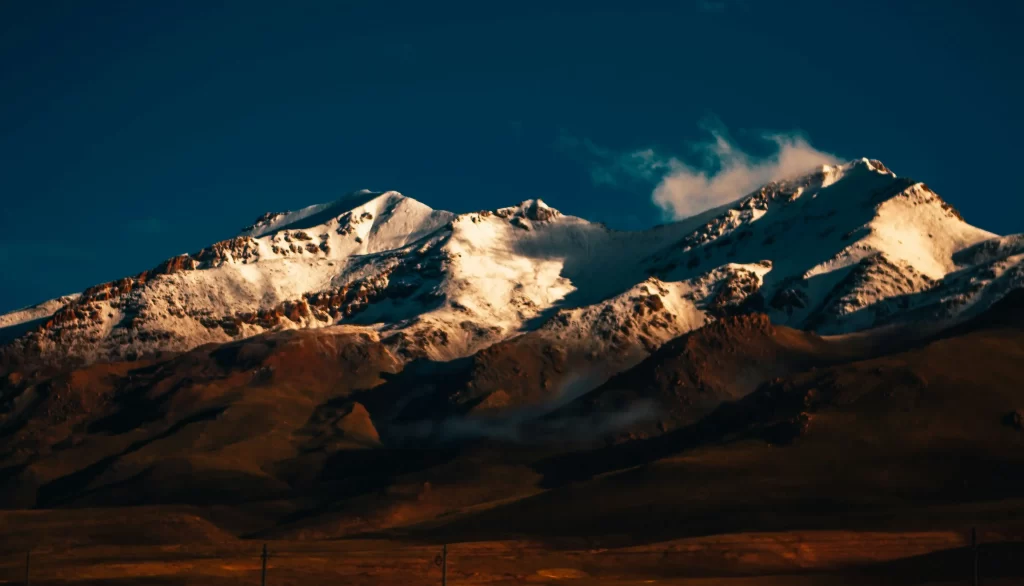
Rongphu Monastery: A Tranquil Oasis
Before reaching Everest Base Camp, take a couple of days to explore the serene Rongphu Monastery. Immerse yourself in its history, marvel at its architecture, and savor the imposing view of Everest just up the Rongbuk Valley. The monastery, founded in 1902, holds the distinction of being the highest-elevation monastery in the world.
Rongphu Monastery offers a peaceful respite, allowing trekkers to acclimatize further and appreciate the spiritual ambiance of the region. Take the time to interact with the resident monks, gaining insights into their way of life amidst the awe-inspiring Himalayan landscape. The proximity to Everest adds an ethereal quality to the surroundings, making Rongphu Monastery not just a stopover but an integral part of the trekking experience.
Preparing for the Everest Advance Base Camp Trek: Gear and Essentials
Gear up for the trek by understanding the unique challenges of the Tibet side. The colder temperatures and stronger winds demand careful preparation. Ensure you have adequate clothing to withstand the chill, including insulated layers, windproof jackets, and sturdy trekking boots suitable for varied terrain.
Acclimatization is a gradual process, and spending time at Rongphu Monastery allows your body to adjust to the high altitude. Stay hydrated, consume a balanced diet, and take it slow to minimize the risk of altitude sickness. Your trekking gear should also include a reliable backpack, trekking poles, a high-altitude sleeping bag, and a quality pair of sunglasses to protect against the intense mountain sun.
The Beauty of Mount Everest Advance Base Camp Trek:
As you approach Everest Base Camp, the proximity to Rongbuk Glacier enhances the allure of the surroundings. Take a moment to appreciate the stunning scenery, the vastness of the landscape, and the natural wonders that make Everest Base Camp a destination of unparalleled beauty.
The camp itself sits at an elevation of 5,364 meters (17,598 feet), offering a unique perspective of Everest. The iconic Khumbu Icefall and the formidable North Face of the mountain dominate the horizon. The campsite is not just a resting point but a stage where the grandeur of Everest unfolds before your eyes.
Set against the backdrop of towering peaks and immense glaciers, Everest Base Camp becomes a meeting ground for trekkers, climbers, and adventurers from around the globe. Engage in conversations with fellow enthusiasts, share stories, and revel in the camaraderie that forms amidst the beauty of this natural amphitheater.
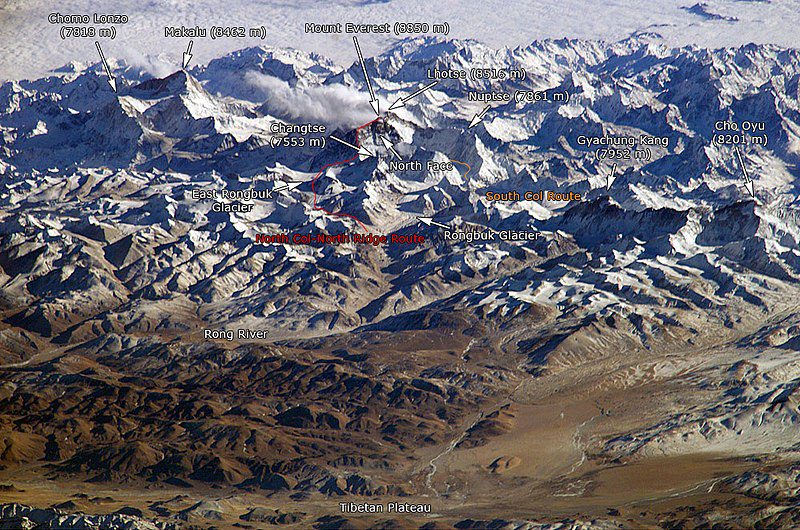
Photo Credit/Author: NASA / Jenderk Jan Derk
Trekking Challenges: The Two-Day Ascent
The trek from Everest Base Camp to Advance Base Camp spans approximately 22 kilometers (12 miles), presenting challenges and rewards in equal measure. Gain an elevation of 4,300 feet (1,310 meters) over two days, with an intermediate camp set up between the two base camps. This segment of the journey is not just a physical feat but a testament to the indomitable spirit of adventure.
The trail meanders through the Rongbuk Valley, offering panoramic views of Everest and its neighboring peaks. As you ascend, notice the changes in the landscape, from the rocky terrain of the lower elevations to the snow-covered expanses near Advance Base Camp. The trek is an immersive experience, allowing you to witness the raw beauty of the Himalayas in all its glory.
Set up camp at the intermediate point, surrounded by the grandeur of the mountains. The evenings at high altitudes are serene, with the crisp mountain air and the vastness of the star-lit sky creating an atmosphere of tranquility. Take the time to reflect on the journey so far, appreciating the challenges overcome and anticipating the final push to Advance Base Camp.
Cultural Immersion in Tibet
Beyond the physical challenges, the journey to EABC offers a unique opportunity for cultural immersion in Tibet. Delve into the distinctive traditions, customs, and landmarks encountered along the way. Experience the rich tapestry of Tibetan culture that adds depth to the trekking adventure.
As you traverse through Tibetan villages and monasteries, engage with the locals to gain insights into their way of life. Witness traditional ceremonies, explore ancient artifacts, and participate in rituals that have withstood the test of time. The cultural aspect of the trek is not just a sidebar but an integral part of the overall experience, allowing you to forge a deeper connection with the land and its people.
Mallory and Irvine: The Unsolved Mystery
As you trek along the historic North Col route, ponder the mysteries surrounding George Mallory and Andrew “Sandy” Irvine’s 1924 expedition. Explore the debate surrounding their potential summiting of Everest, and the ongoing mystery that captivates adventurers and historians alike.
The North Col route, pioneered by Mallory in 1921, holds a unique place in the history of Everest expeditions. Mallory’s return in 1922 and 1924, especially the latter, remains shrouded in mystery. The 1924 expedition is surrounded by speculation and intrigue, with the question of whether Mallory and Irvine reached the summit lingering to this day.
In 1999, Mallory’s body was discovered on Everest, but it did not provide conclusive evidence about their summit attempt. Irvine’s body and the camera he carried, which could have contained pictures of the summit, remain elusive. The unresolved mystery adds a layer of fascination to the North Col route, making each step a journey through the annals of Everest’s storied past.
Comparing North Col and South Col Routes
Contrast the North Col and South Col routes, examining factors such as popularity, cost, and the number of climbers. Gain insights into the choices climbers face when selecting their route, and how the North Col route has evolved in popularity since its reopening in 1980.
The South Col route, originating from the Nepalese side, has traditionally been the more popular choice for climbers attempting Everest. However, the North Col route, once off-limits to foreigners between 1950 and 1980, has gained prominence since its reopening. Part of this popularity is attributed to the lower cost of obtaining a climbing permit for the North Col route.
The allure of the North Col lies in its historical significance and the unique challenges it presents. While the South Col route sees a higher number of climbers, the North Col route attracts those seeking a less crowded ascent and a different perspective on the world’s highest peak.
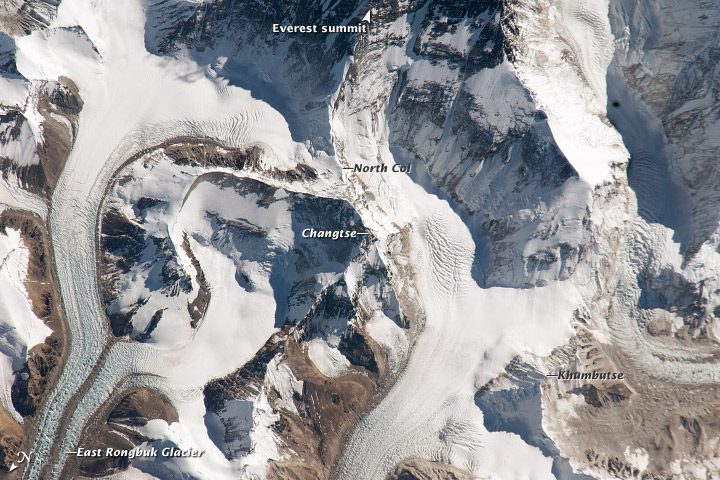
Find the wiki photo here.
The Record-Keeping of Ms. Hawley
Take a glimpse into the extensive record-keeping maintained by Ms. Hawley, the custodian of the Himalayan database. Explore statistics and insights into the climbers who have attempted the North Col route, adding a layer of historical context to your trekking adventure.
Elizabeth Hawley, a legendary figure in the world of Himalayan mountaineering, diligently recorded details of expeditions in the region. Her meticulous database spans decades, offering a comprehensive view of the challenges and triumphs faced by climbers attempting routes like the North Col.
As you embark on your own Everest adventure, appreciate the legacy of those who came before you. The records maintained by Ms. Hawley serve as a testament to the indomitable spirit of exploration that has defined Everest expeditions over the years.
Environmental Considerations: Sustainable Trekking
Amidst the awe-inspiring landscapes, consider the environmental impact of trekking in the Everest region. Emphasize the importance of responsible and sustainable practices, ensuring the preservation of this natural wonder for generations to come.
The Himalayan region, including Everest, is sensitive to the impact of human activity. As you traverse through this pristine environment, make a conscious effort to minimize your ecological footprint. Abide by Leave No Trace principles, dispose of waste responsibly, and support local initiatives that contribute to the conservation of the Himalayan ecosystem.
Engage with local communities and organizations working towards sustainable tourism practices. Contribute to efforts aimed at preserving the unique flora and fauna of the region, ensuring that future generations can revel in the same unspoiled beauty that captivates trekkers today.
Capturing the Journey: Photography Tips
Enhance your trekking experience by capturing the beauty of the journey through photography. Receive tips and suggestions for navigating the unique lighting conditions and landscapes encountered along the way, creating lasting memories of your Everest adventure.
The Himalayas, with their ever-changing weather and dramatic landscapes, provide a canvas for breathtaking photography. Equip yourself with a reliable camera, extra batteries, and ample storage to document each step of your trek. Consider the play of light and shadow on Everest’s peaks, the vibrant hues of prayer flags against the mountain backdrop, and the camaraderie shared among fellow trekkers.
Experiment with different angles and perspectives, capturing the grandeur of the mountains in a way that resonates with your personal experience. Your photographs will not only serve as mementos of the trek but also as a visual narrative of the challenges, triumphs, and beauty encountered along the way.
In conclusion, the trek to Mount Everest Advance Base Camp transcends the physical act of walking. It’s a journey of acclimatization, cultural immersion, historical exploration, and environmental consciousness. From the ancient streets of Lhasa to the mysteries of Everest’s past, every step is a revelation, and every vista is a testament to the grandeur of nature. Prepare yourself for the ultimate adventure – the world’s highest trek awaits!
